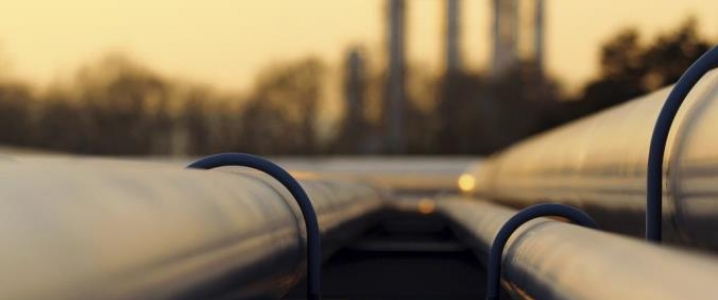On Thursday, Qatari Energy Minister Mohammed al-Sada said he expected China’s demand for liquefied natural gas (LNG) to spike by between 20 percent to 25 percent this year despite heightened trade tensions between the U.S. and China.
Al-Sada, in comments made to Reuters ahead of a conference to be held in Berlin on Friday, said LNG demand from China was expected to show strong growth again this year after rising about 46 percent last year. Overall global demand for LNG this year was expected to match the 11 percent jump seen in 2017, al-Sada said.
He said he hoped the U.S. and China would resolve their differences over trade and avert a trade war. “I think and hope that logic and rationalism will prevail,” he added. “It is in the interest not only of the two countries, but also the rest of the world.”
Both China’s gas and its LNG demand increases are being driven by Beijing’s drive to have gas make up at least 10% of the country’s energy mix by 2020 to offset record air pollution levels in its major urban centers. That earmark will also increase by 2030.
However, as reported extensively by OilPrice.com already, Beijing has threatened to levy a 25 percent retaliatory tariff against U.S. LNG imports. The move, if implemented, will cause pain for not only China but for new and proposed LNG projects in the U.S. that need both Chinese funding and long-term off-take agreements with Chinese to firms if they are to ever come to fruition and reach the all-important final investment decision (FID) needed to be constructed. Related: Platts Survey: OPEC Production Jumps To 10-Month High
If China does indeed push through with its LNG retaliatory tariff threat it will put in jeopardy the so-called second wave of the U.S. LNG sector that should start production around 2022 or later. A knock-on effect will be that the U.S. LNG sector will lose potential market share to both Australia, which will bypass current LNG export leader Qatar sometime next year, as well as Qatar itself. By the time this second wave of U.S. LNG projects were scheduled to come on-stream, global LNG markets are projected to pivot from a current over supply scenario to one of under supply.
Qatar’s pivot
Al-Sada’s comments also comes Qatar is trying to position itself to regain the top LNG export spot after losing it next year. In mid-2017, facing political backlash and an economic boycott from many of its Arab neighbors, including Saudi Arabia, over terrorism funding allegations, the tiny gas rich nation fought back, announcing that it would increase its LNG liquefaction capacity from an already robust 77 million tonnes per annum (mtpa) by 100 mtpa 2020 or 2021. It was a disclosure that not only shocked global energy markets but one that will have both systemic and fundamental changes for the sector.
The new additional volumes will be secured by doubling the size of the country’s new gas project in the southern sector of the North Field, which Qatar Petroleum announced in April 2017.
China to become global gas import leader
China passed South Korea late last year to become the world’s second largest LNG importer after Japan, with projections that by or before the mid part of the next decade it will pass Japan to take the top spot. Related: Why Algeria’s Oil Sector Isn’t Booming
In June, the Paris-based International Energy Agency (IEA) said in its Gas 2018 annual report that China will become the world’s top natural gas importer by next year.
According to the IEA report, Chinese demand for natural gas will rise by almost 60 percent between 2017 and 2023 to 376 billion cubic meters (bcm). This includes a rise in its LNG imports to 93 bcm by 2023 from 51 bcm in 2017. Global LNG imports will rise to 505 bcm by 2023 from 391 bcm in 2017, an increase of some 114 bcm.
The Asia-Pacific region, which accounts nearly two-thirds of all global LNG demand, will hold that lead going forward. When all of Asia is taken into account, according to the IEA, LNG sales in Asia will rise to 75 percent of all LNG sold globally from 72 percent last year.
By Tim Daiss for Oilprice.com
More Top Reads From Oilprice.com:
- OPEC/NOPEC To Discuss 1 Million Bpd Production Boost Next Week
- Asia Braces For Much Tighter Oil Markets
- The World’s No.1 Offshore Boom Is Facing Uncertainty


















